H. Pommier is Belgian, not French, but this Windsor is every bit as beautiful as its French cousins.
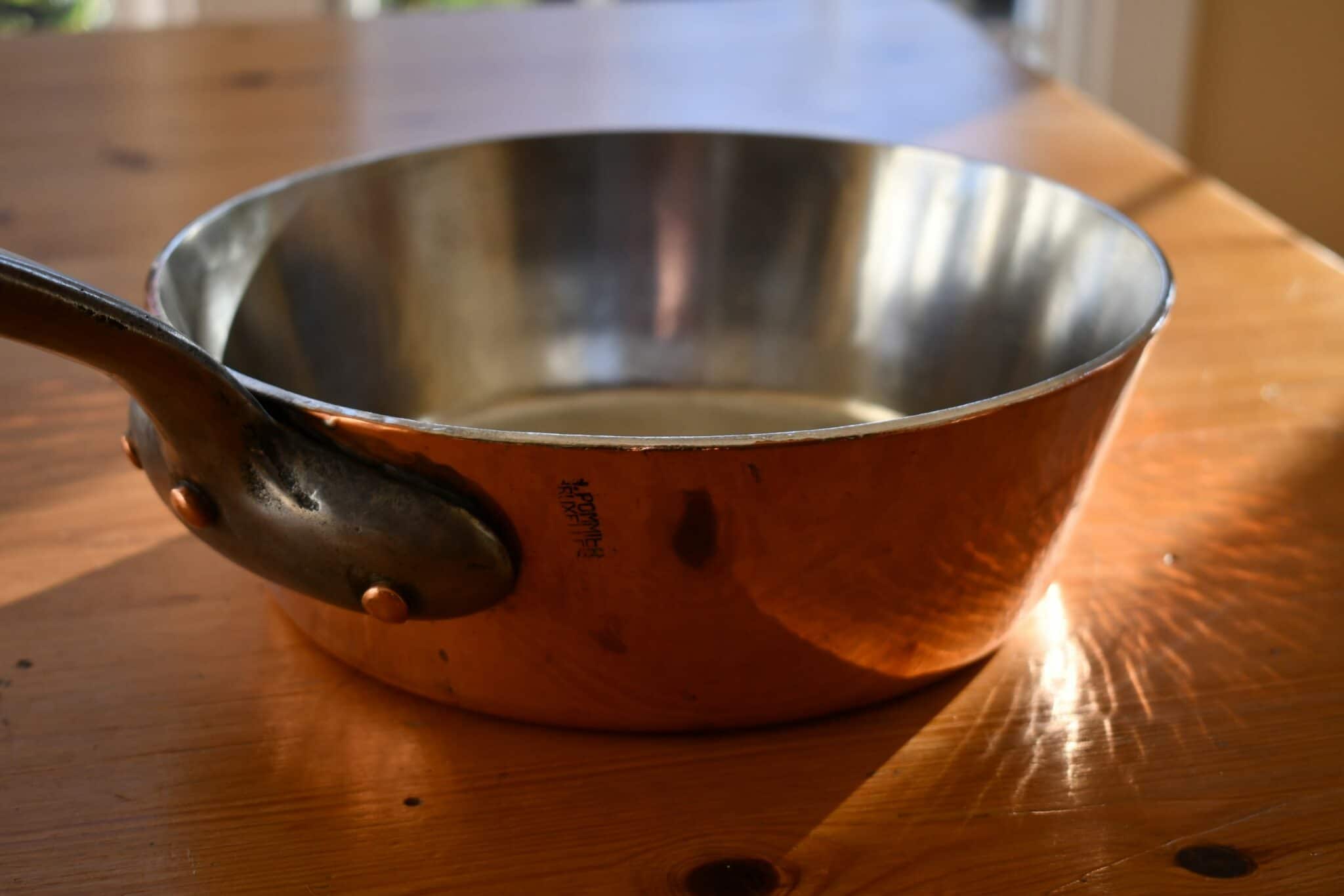
- Type: Tin-lined Windsor in hammered finish with iron handle fastened with three copper rivets
- French description: Sauteuse évasée étamée et martelé avec queue de fer munie de trois rivets en cuivre
- Dimensions: 24cm diameter by 8cm tall (9.4 inches by 3.1 inches)
- Thickness: 3.5mm
- Weight: 3482g (7.7 lbs)
- Stampings: H. POMMIER BRUXELLES
- Maker and age estimate: Pommier; 1910-1920s
- Source: FrenchAntiquity (Etsy)
This lovely Windsor was made by the Belgian chaudronnerie Pommier, chaudronnerie de la cour (coppersmith to the royal family), and carries with it a proud legacy of high quality. It came to me from Steve Nash at FrenchAntiquity; he has an excellent eye for copper and works with a very skilled retinner, and if you ever wonder why I keep buying from him, just take a look at this beauty.
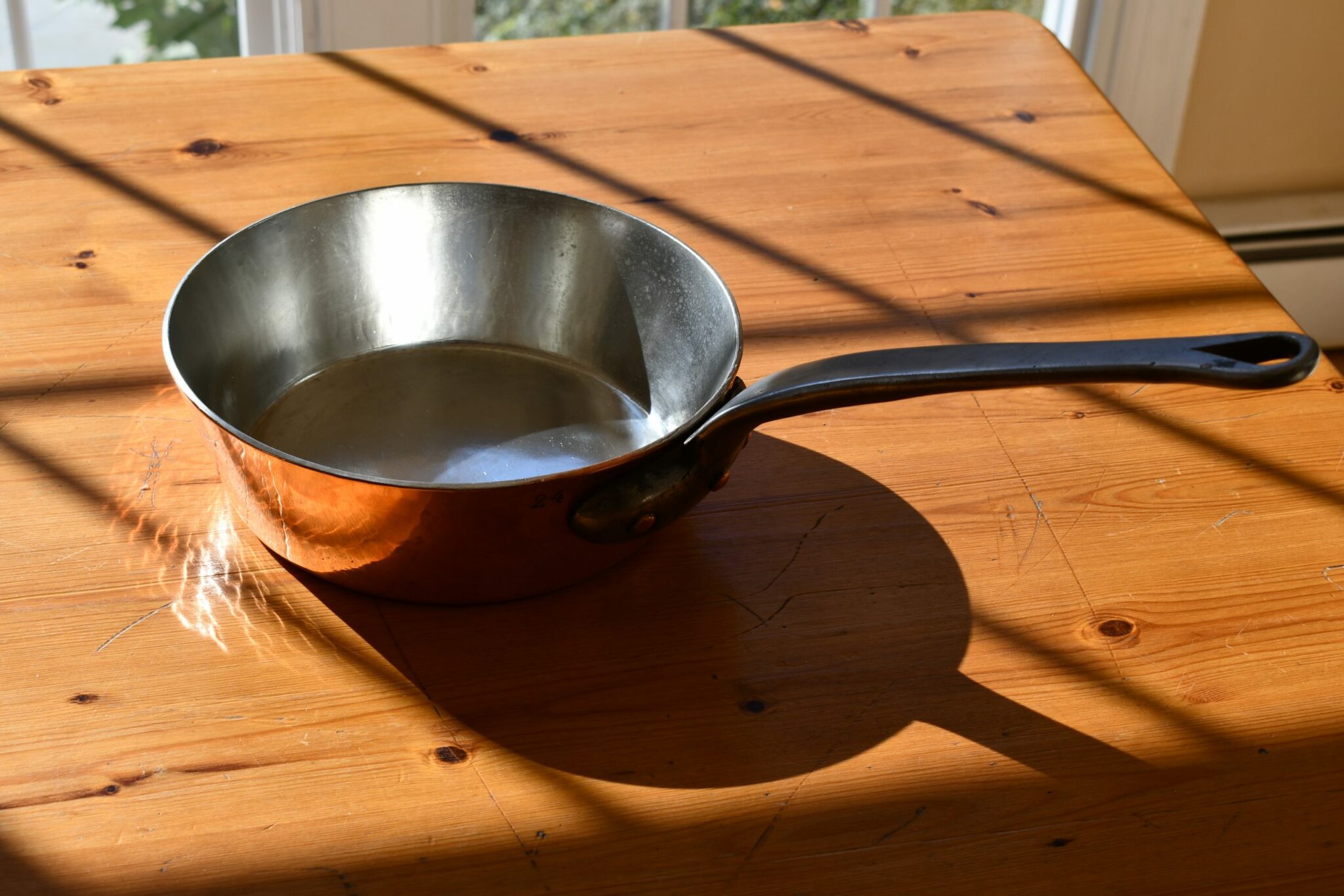
Its distinctive flared conical shape makes it a Windsor. This pan was intended to help with the time-consuming task of reducing sauces — the widening shape increases the surface area of the liquid inside so a greater volume of steam can evaporate.

The sloping sides also mean that the floor of a Windsor is smaller than the rim. This pan’s interior floor is 19cm across (7.5 inches), 5cm narrower than its rim. That’s not a lot of space for sautéing vegetables or proteins, but bear in mind that the sidewalls conduct heat just as well as the base and provide an additional heat transfer surface. I’ve seen a Windsor referred to as a fait tout — “do everything pan” — and I suspect it’s because its half-saucepan, half-sauté shape enables it to stand in for either.
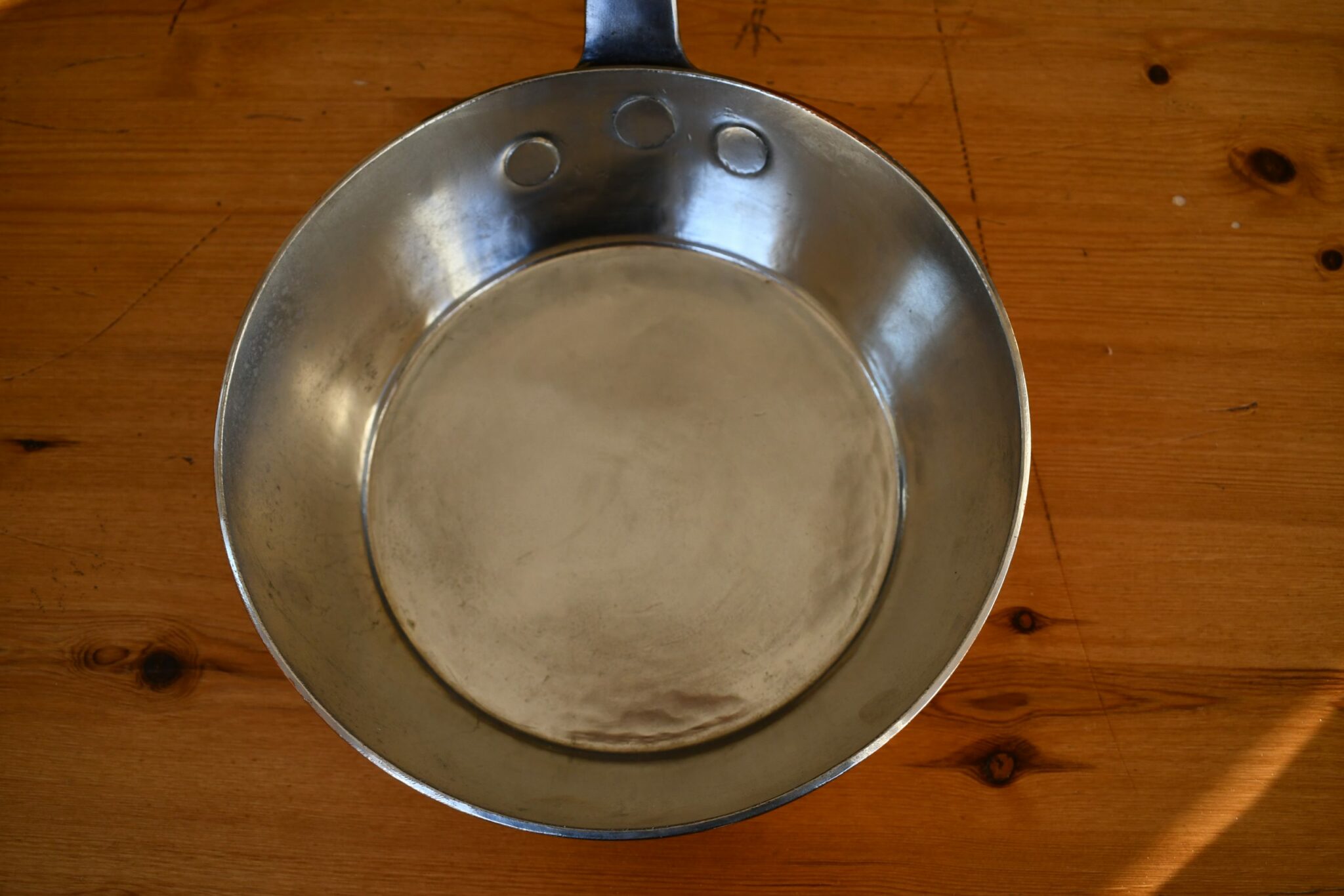
I measure the rim at 3.5mm thick but I suspect it might be a little thicker in the base. I have a 25.5cm Lee & Wilkes Windsor that’s 3.4mm at the rim — this pot is 1.5cm less in diameter, half a centimeter shorter in height and only .1mm thicker and somehow weighs half a pound more. I suspect some of that extra mass could be in the base, but there’s another possibility — the iron handle.
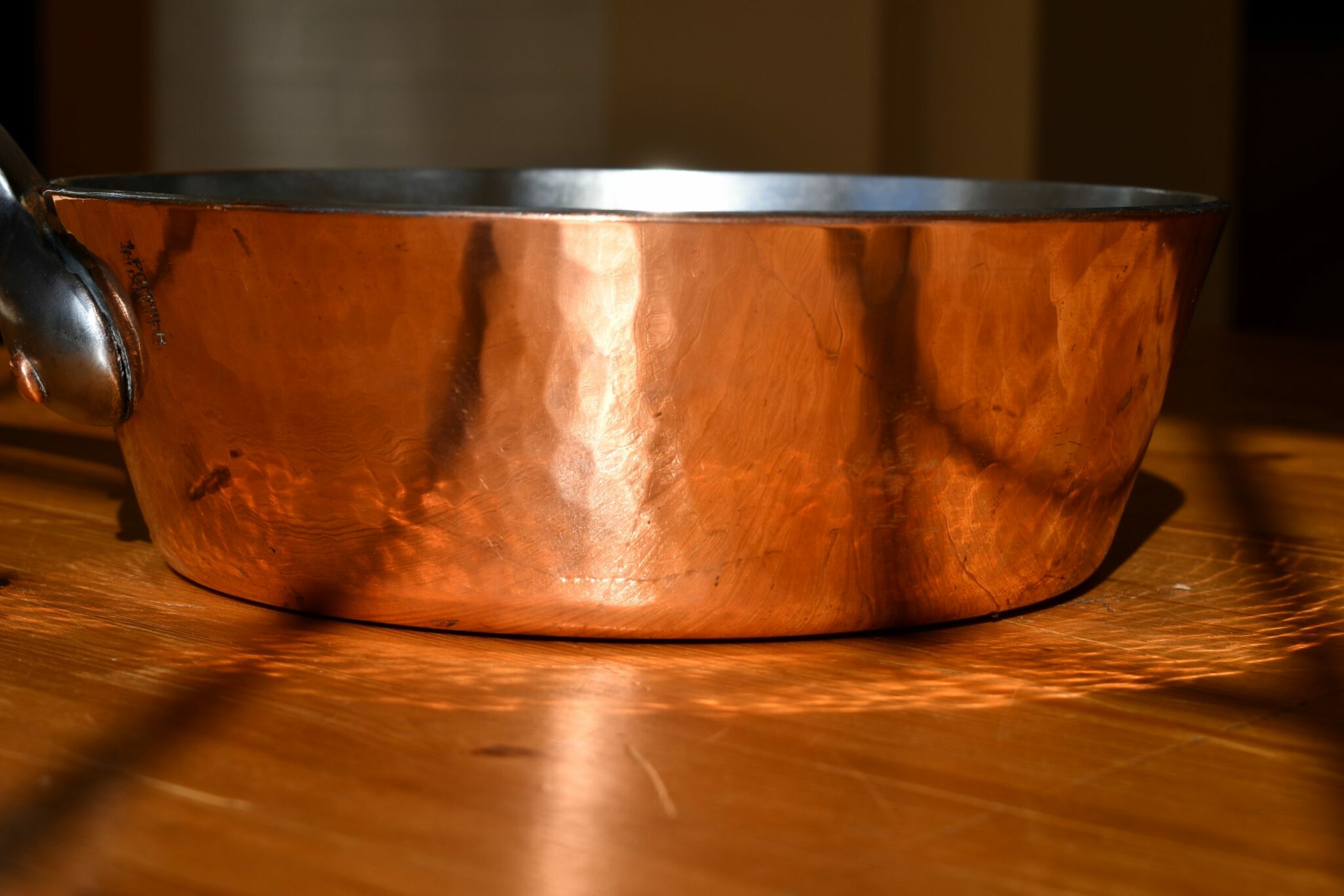
And this pot’s handle is particularly burly. The baseplate is large and bulbous, with the same voluptuous shape as I see on my really old massive Gaillard pieces. The rivets have a hammered finish to them, suggesting the handle was attached by hand and not with a riveting machine.
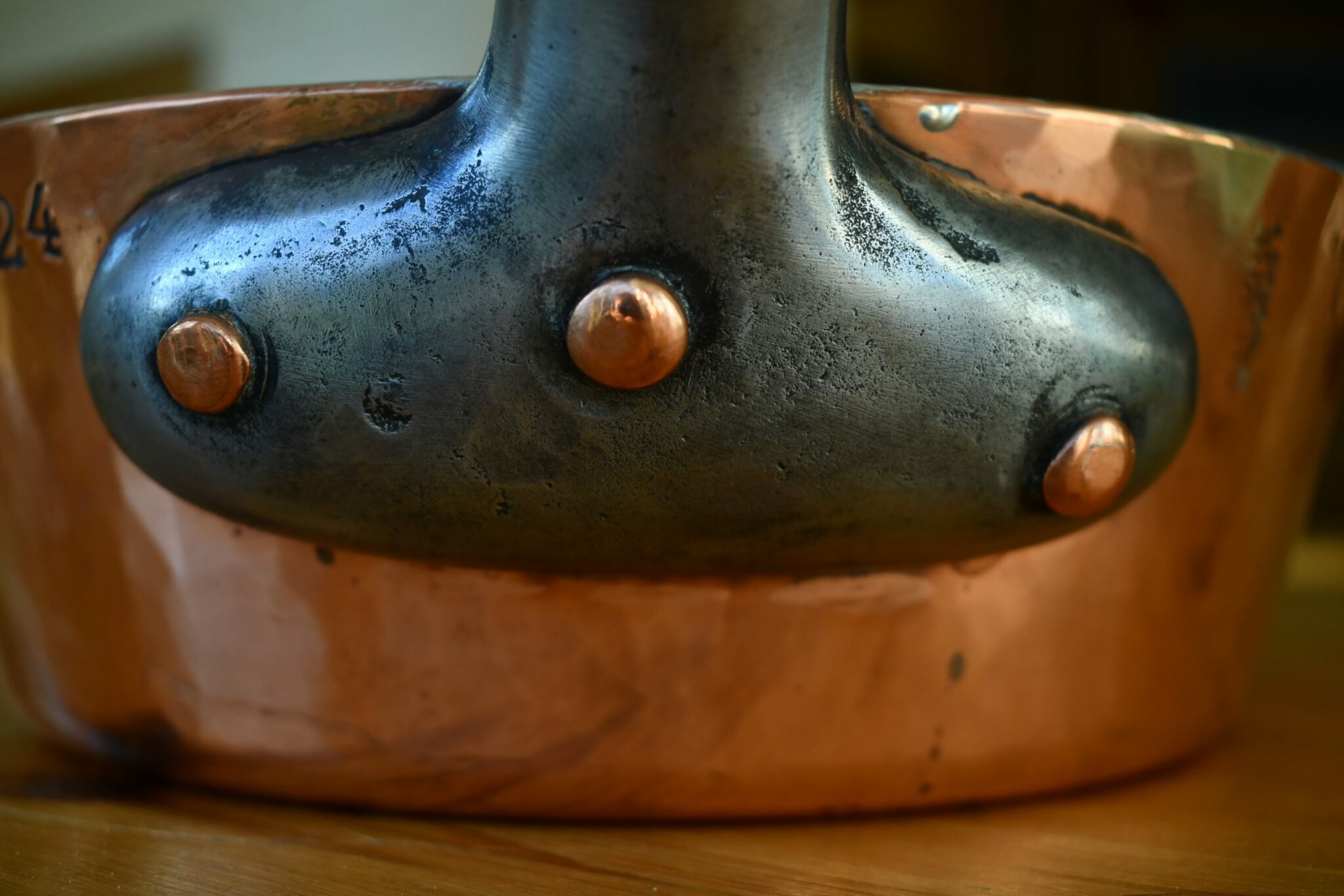
The interior rivets are flattened and flush set. To the best of my knowledge, this also suggests hand assembly and finishing. The handwork of these rivets is the best indicator I have that this pan is on the early side of Pommier’s history — my guess is between 1910 and 1920 or so, what I consider the last years of the “Golden Age” of coppersmithing in Europe.
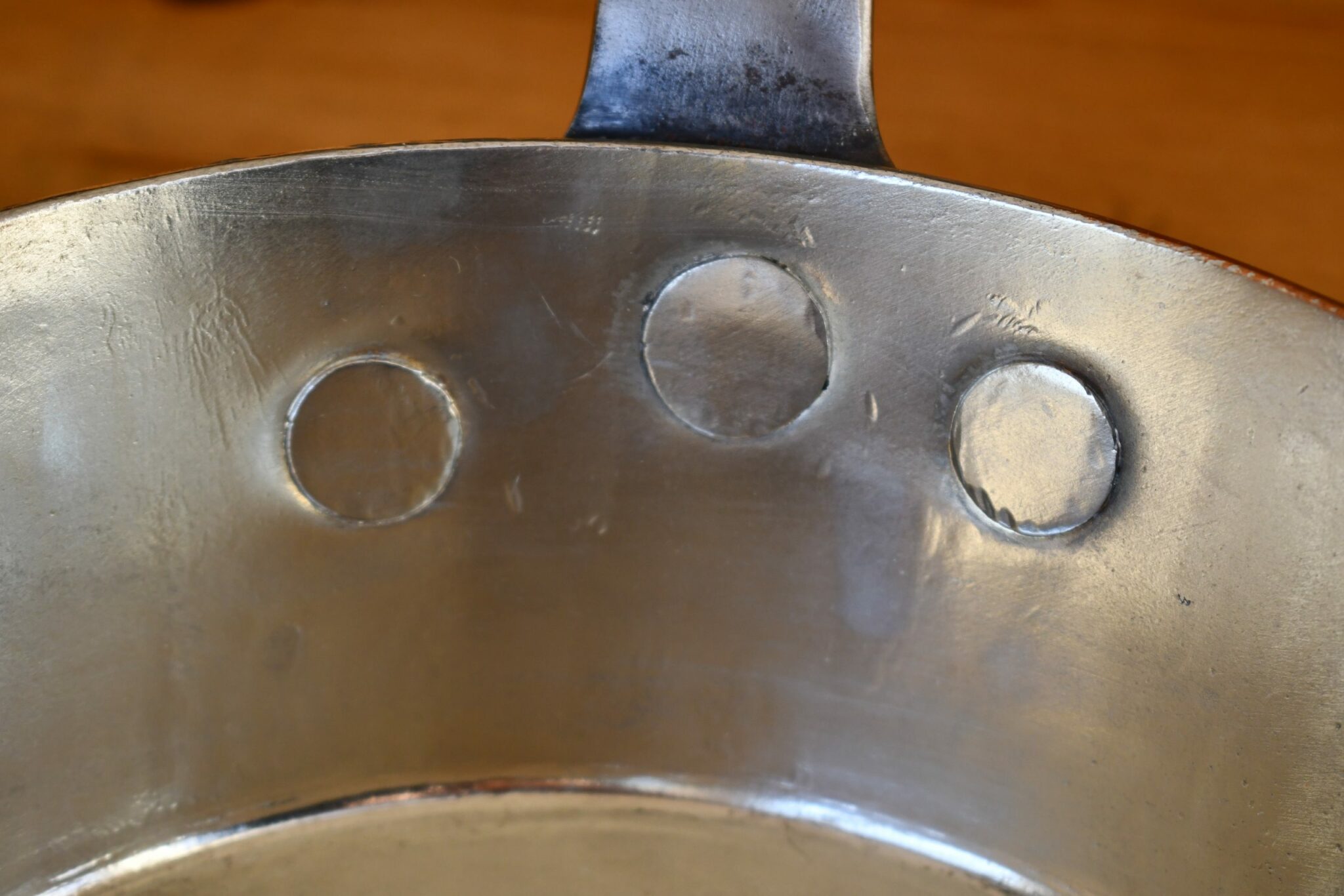
There is no one formula for “cast iron” and whatever alloy Pommier used for this handle gives it a lovely silvery look and a very smooth (but not slippery) feel in the hand. It’s a pleasure to hold.

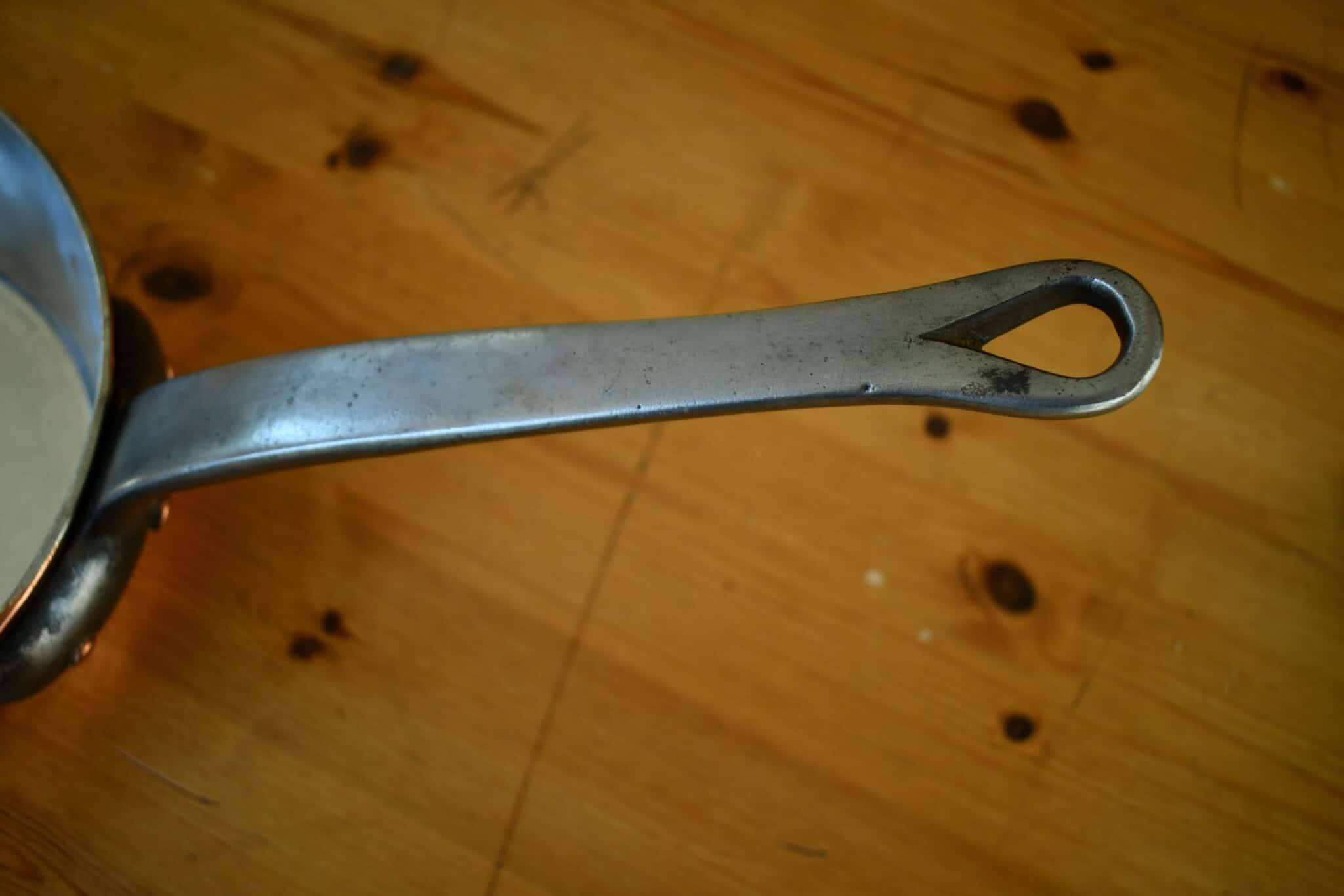
It has two stamps: H. POMMIER BRUXELLES for its maker and 24 for its diameter in centimeters.
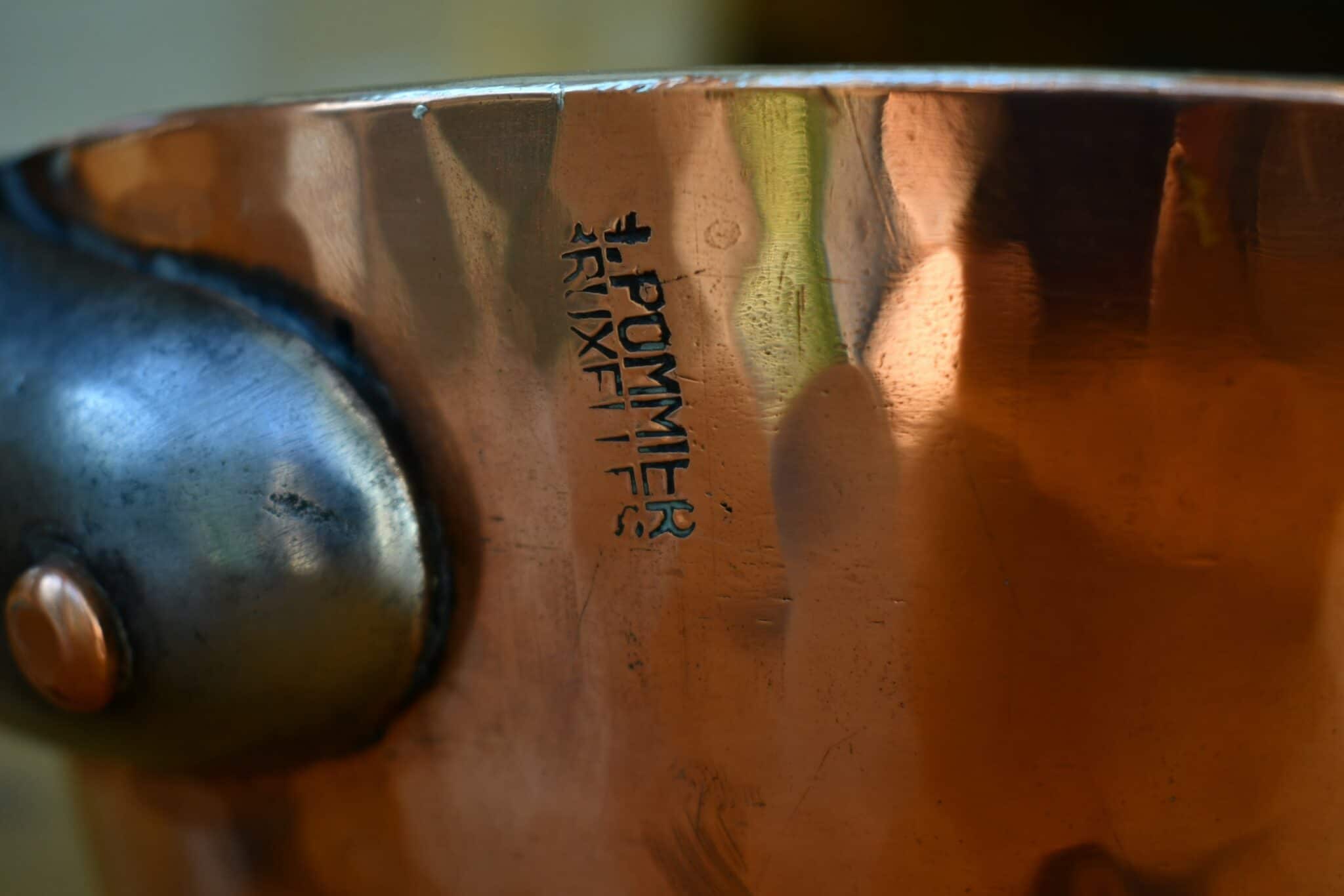
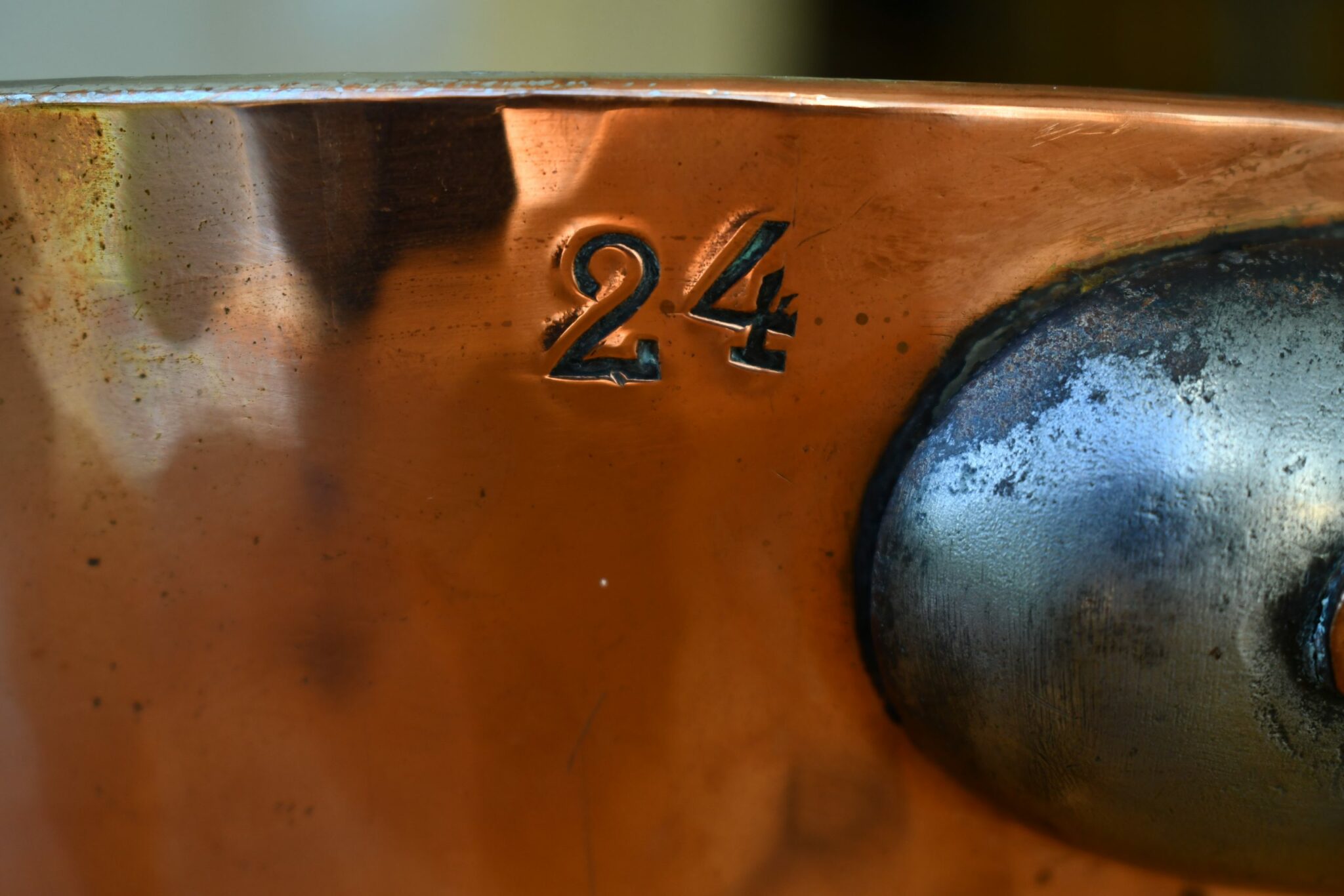
The exterior is hammered, but this pot has been through more than a few polishings that over time have softened the contours of hammering. In my opinion, the best way to appreciate this pot’s finish is to look at it in sunlight.

This pot epitomizes what I love so much about vintage copper cookware: beauty, quality, history, and value. I hope this site encourages and informs you so that you too can find pieces you love.
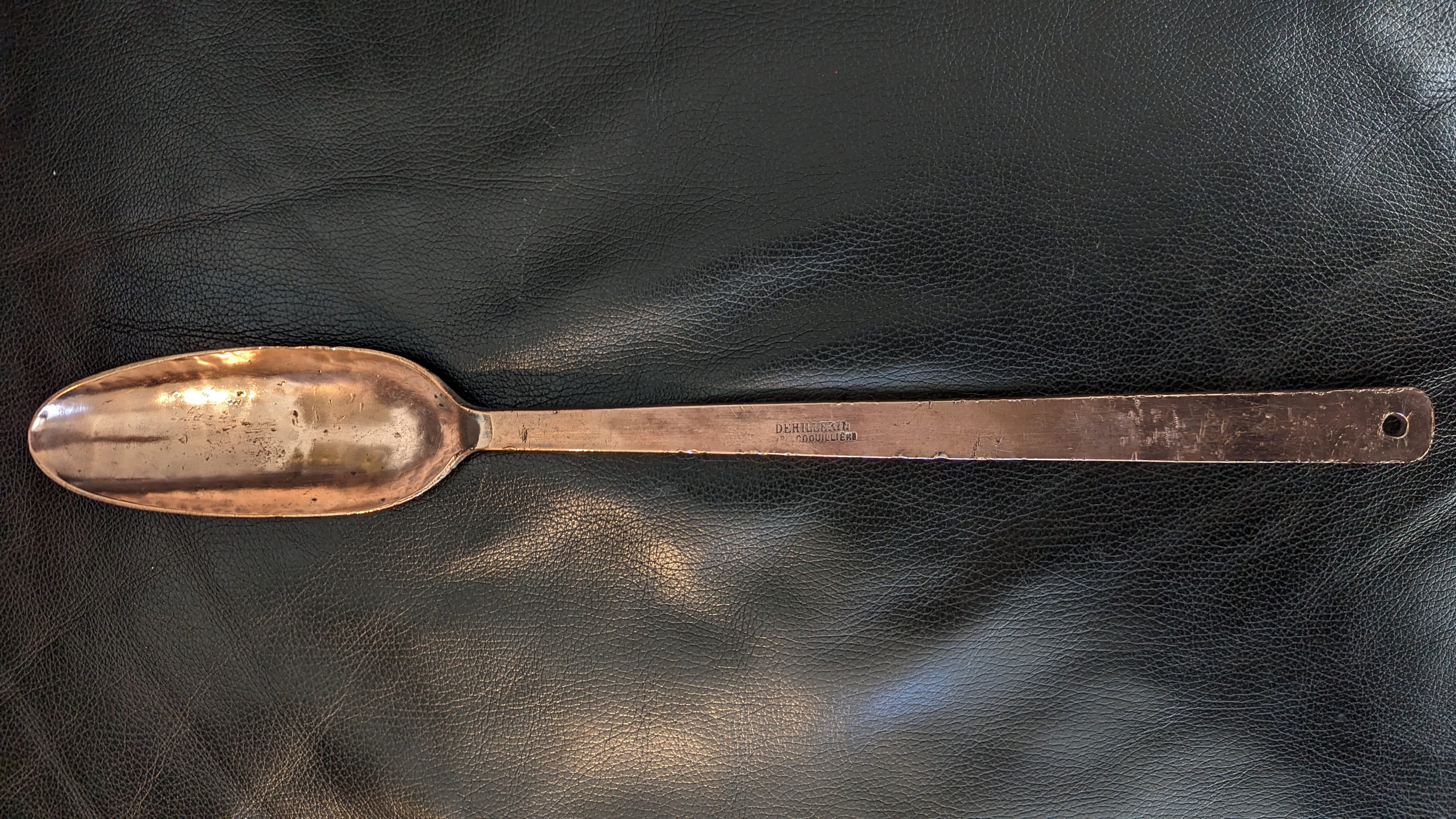

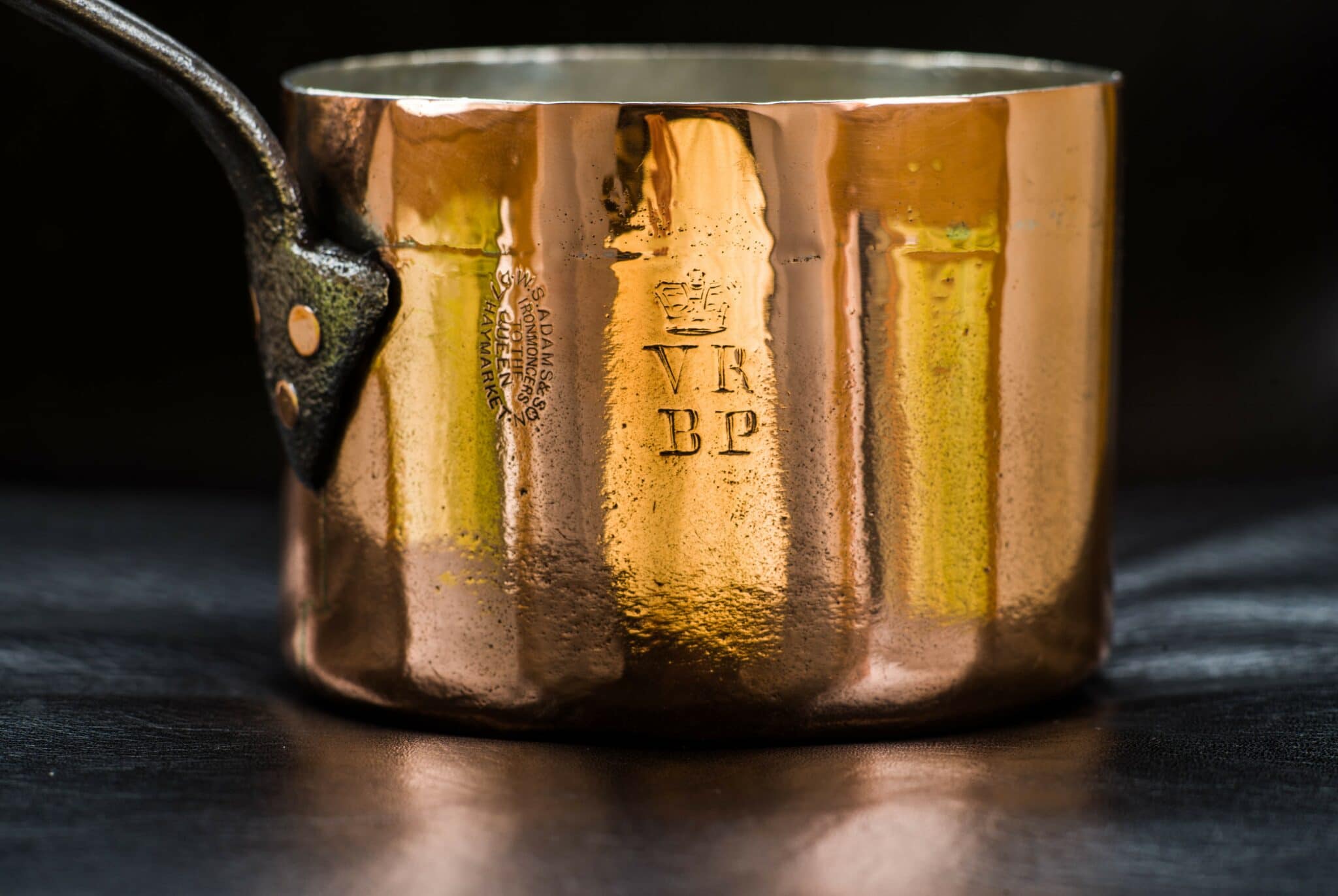

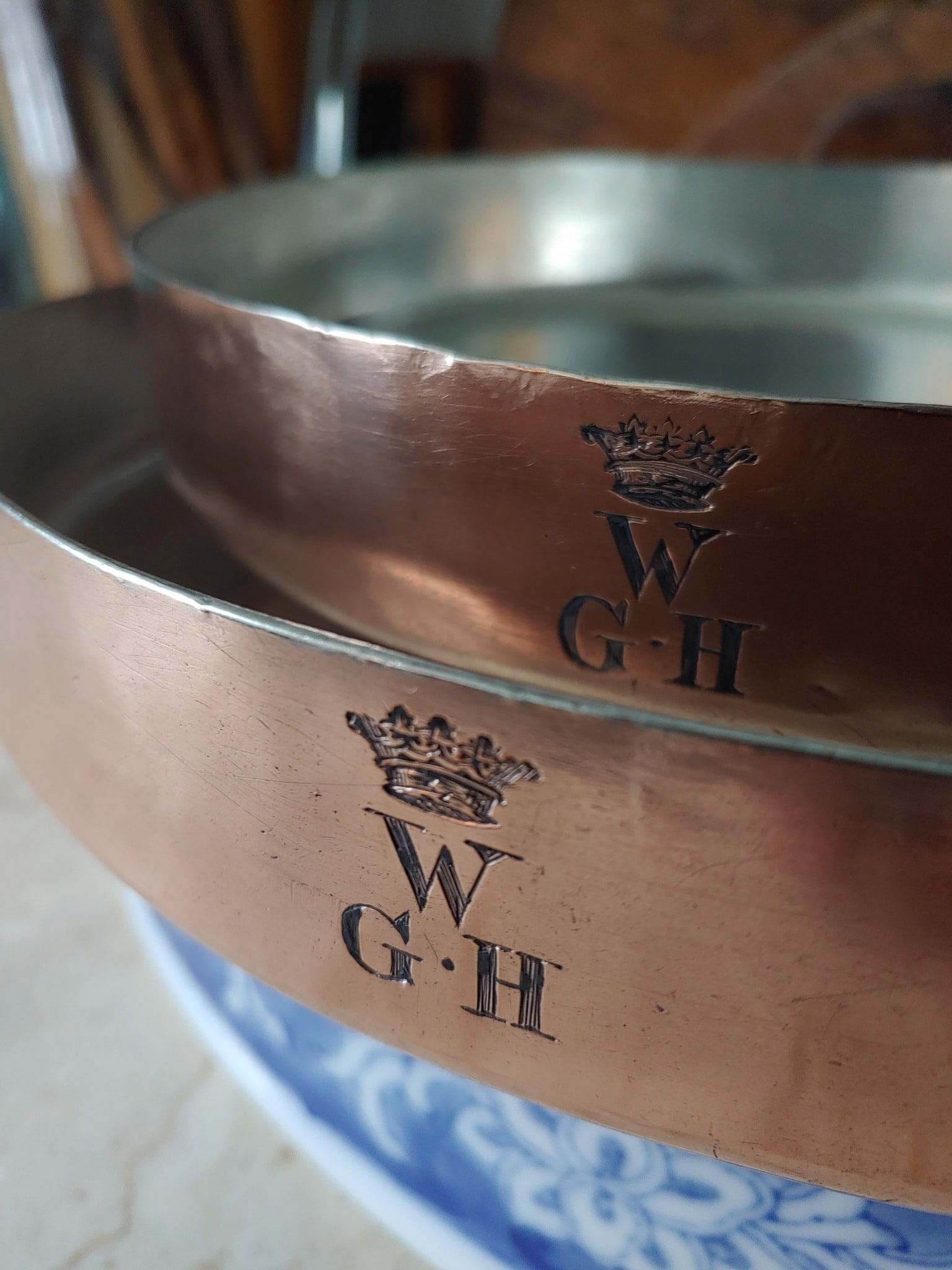
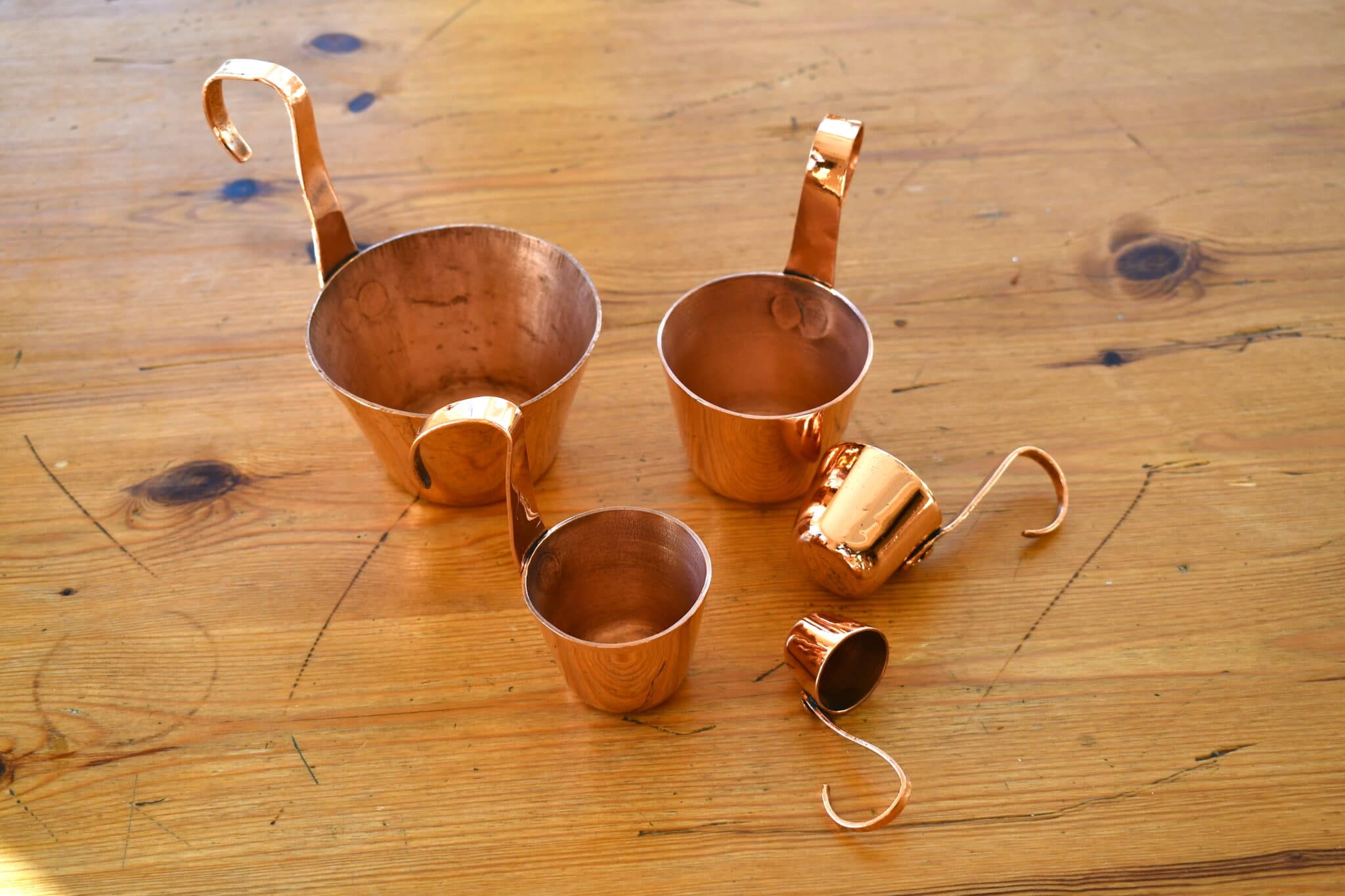
That last comment about enjoying the hammered finish via sunlight resonates with me. It is in the stillness of the morning, when the sun is rising, that my kitchen glows from the splashes of dots and rays bouncing off my hammered copper pots. That to me is incredibly satisfying. Thank you for that visual.